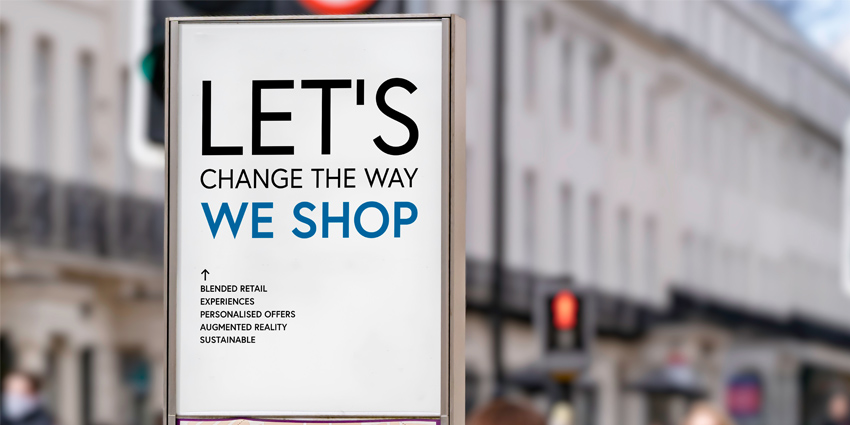There is a massive opportunity to use virtual reality (VR) in retail, and according to a 2021 survey by e-commerce technology company Zakeke, 41 percent of shoppers are eager for greater personalization.
32 percent want the option to customize products enabled by VR and were also eager to visualize and interact with product categories like apparel, shoes, and furniture before buying at 34 percent, 29 percent, and 35 percent, respectively. Despite this, 71 percent of those surveyed have never actually used VR or augmented reality features when shopping.
VR creates an immersive space where users can interact with digital worlds around them, meaning that you could have entire stores in VR, embed 3D versions of products in VR environments, empower buyers to customize the design before buying, and much more. Indeed, the opportunities in AR/VR retail will be worth $17.86 billion by 2028, according to a 2021 report by research firm Analytics Insights.
How Does VR in Retail Work?
Like most VR applications, VR in retail will operate through virtual reality headsets. Buyers can put on a headset to enter a three-dimensional virtual world, where they can engage in brand interactions that are not possible in the real world.
For instance, in VR, an AI-enabled digital human may walk the customer through an immersive storytelling experience describing the brand’s journey. They could also visualize and interact with a product before buying it – particularly true for heavy consumer goods like furniture or appliances. A customer could try to assemble a piece of furniture inside VR before trying it in real life.
To enable these apps, retail brands must create VR content and applications of their own. Content like 3D videos, 3D product designs, and immersive audio clips must first be created by the brand and then incorporated into a VR app that works with popular headsets like the Oculus Quest or HTC VIVE.
Brands must also consider the question of VR content distribution. Establishing a VR-enabled kiosk in physical retail stores is one option, which would allow store visitors to experience products in VR before making a purchase decision and increase the chances of purchases as well the value of products being bought. VR apps could also be launched on the app marketplace for select headsets.
Ideally, customers should be able to choose a product inside VR and directly initiate a purchase. Here are some of the top use cases for VR in retail.
How VR is Transforming Retail: Four Use Cases
Virtual reality has the potential to transform retail in the following ways:
Shoppers can try on apparel without any physical contact
Contactless trials are a top use case for VR in retail as it addresses existing business problems. Customers often hesitate to try on garments that have been worn by others for hygiene reasons, and in the wake of the COVID-19 pandemic, this has become an urgent issue.
Purchasing apparel without trials could actually increase return and refund volumes, putting added pressure on the retailer logistics systems. Inside a VR environment, customers can pick and choose apparel from different stores, brands, and price points, and try them with ease.
Product customization can be finalized in VR
Customization is a major driving factor for customer satisfaction in retail, and in sectors like automobiles, product customization could make or break purchase decisions.
Customizing a product and tailoring it with a customer’s precise specifications can be a complex task, requiring a lot of back and forth communication, which ends up delaying the conversion process.
VR provides customers with simple, non-technical tools to fine-tune a product’s design. They do not need to know about or learn a dedicated design user interface (UI) – they can simply project the product’s 3D image in VR and add on embellishments, color changes, and other items as required.
In-store VR can boost product sales
Since the majority of buyers are yet to try out AR or VR in their shopping experience, it is a good idea to introduce the technologies to them inside a brick-and-mortar store.
Brands can put up a kiosk with a mounted headset and connected content feed, and when customers visit the store, they can experience the brand in an entirely new way through VR. For example, a store operating out of a relatively small space can show off its entire product catalog via VR, with this app also making it more likely that the customer will engage with the brand via VR again in the future.
Employees can be trained on soft skills using VR
VR makes soft skills training much more effective, and retail success relies heavily on store employees’ skillsets. Retaillers can play out real-world scenarios in a virtual reality environment so that employees know how to handle problematic customer situations and possible conflicts.
Sensitivity training and Diversity, Equality and Inclusion (DE&I) training are other areas that could gain from VR, significantly improving customer experiences in stores.
What Does the Future of VR in Retail Look Like?
In the short term, VR offers important opportunities to retailers. According to Accenture’s Business Futures 2021 report, just a 1 percent increase in the use of AR/VR in retail could enable additional sales opportunities worth $66 billion.
In the long term, companies like Facebook, Microsoft, and Epic Games are working on a unified spatial internet platform called the Metaverse that could completely transform retail. Inside the Metaverse, you could have standalone VR stores, where customers can actually order the corresponding item from a real-world store near them.
The metaverse could also open up new markets as customers from around the world can explore brands and their products without any geographic constraints.
For example, 3D visualization company Matterport revealed a retail VR platform that uses digital twins to connect retailers with new customers. Walmart has also announced intentions to invest in VR for retail, indicating that it could potentially hold fitness classes in AR/VR and offer customers NFTs sometime in the future. These are only a taste of what is yet to come.






